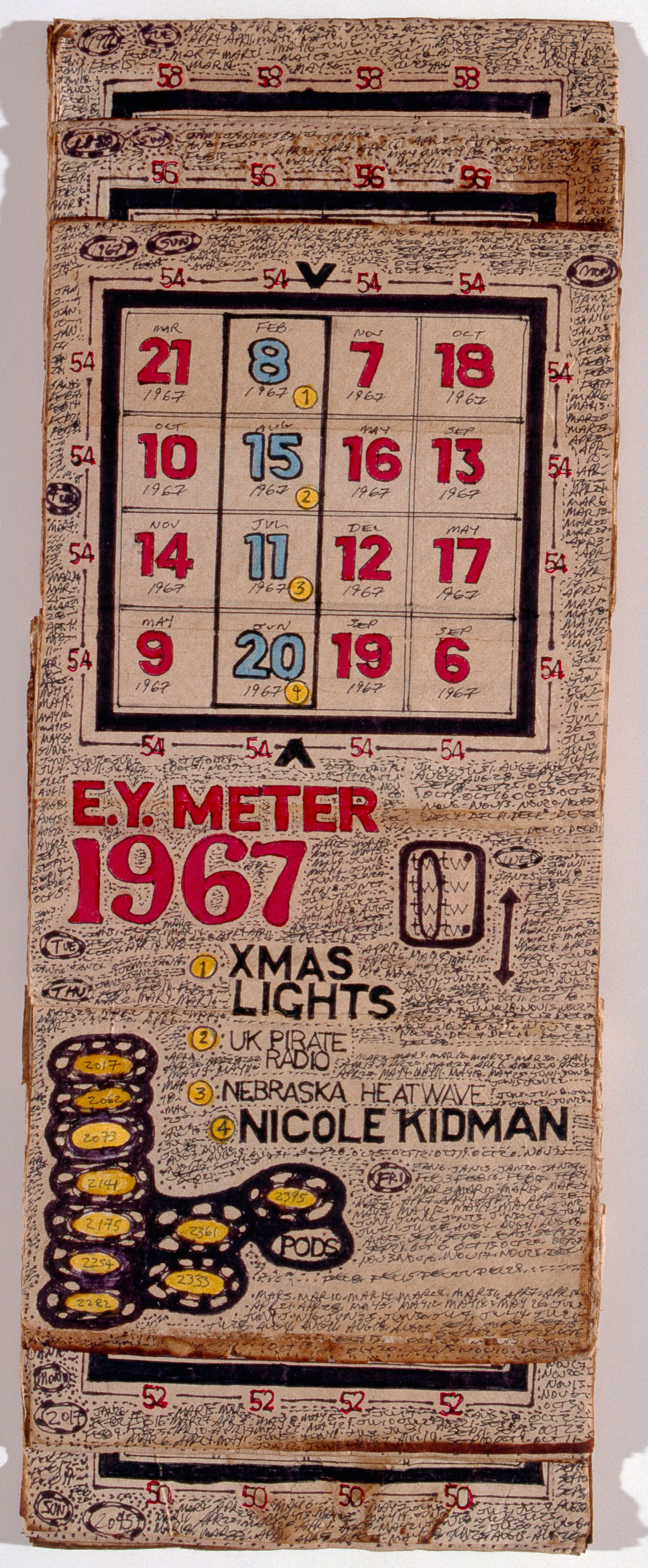George Widener
Untitled, 2012
Artist
George Widener
Title
Untitled
Year of creation
2012
Technique and dimensions
11 parts, mixed media, each approx. 45 x 17 cm
Year of acquisition
2013
Born in Kentucky in 1962, Widener developed an early interest in numbers and calendars, numerology, historical data, population statistics and mathematical calculations. Since the early 1980s he has been working intensively on his complex text-image combinations, which initially emerged out of purely private interest; it was not until 2000 that he exhibited in a gallery for the first time.
In his clearly structured drawings he combines figures and numbers with real historical events. He creates his own contexts of meaning, analyzes world events as well as his own biography and also develops specific codes for superintelligent computers of the future. Influenced by the theories of Ray Kurzweil, one of the leading researchers on artificial intelligence, George Widener is convinced that in 2045 the merger of high-performance computers and human brains will take place and consciousness will be transformed into software. With images following his secret algorithms, Widener wants to provide these supercomputers with intelligent entertainment and make them be friendly to humanity.
But he also looks into the past and deals with historical catastrophes and disasters such as the sinking of the Titanic. His great-great-uncle, who was also named George Widener, died on the Titanic and George Widener repeatedly circles around this tragedy in his works, meticulously listing the number of passengers, the quantities of food and the performance of the engines.
All of these numbers, data and codes that play a central role in George Widener's work are only partly intellectually reflected patterns. He deals intensively with historical calendars and mathematical figures, but beyond that the numbers are part of his inner structure, the fundamental system of his perception of the world. Because George Widener is a savant with Asperger's syndrome, a person with an extraordinary insular talent that was only discovered late. When he sees numbers or makes calculations, images appear in his mind's eye. The interaction of his brain automatically interconnects these different levels of information and thus gives him access to worlds of perception that remain closed to us.
